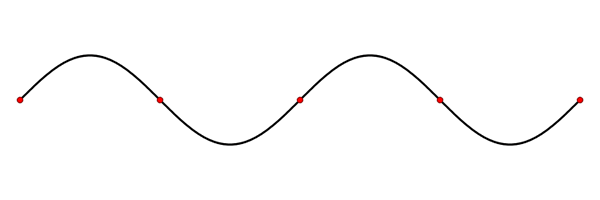The word "seiche" might just be a life saver in a game of Scrabble-but what on earth does it mean? Pronounced "saysh," it is a Swiss French dialect word meaning to sway back and forth and is used by hydrologists to describe an oscillating wave form found in enclosed or partially enclosed bodies of water. The term was picked up and promoted by François-Alphonse Forel, who made the first scientific observations of them on Switzerland's Lake Geneva in the 1890s.
Seiches are a curious natural phenomenon that can cause damage similar in nature to that from a tsunami or storm surge. They are not explicitly modeled by AIR, but are fascinating nonetheless, and worth knowing about.
Have you ever seen bathwater slosh from one end of the tub to the other and back again? That is a seiche in miniature. The seiche is standing or stationary wave-a wave pattern characterized by points that appear to be standing still. It is a mode of vibration associated with resonance that arises when reflected waves interfere with waves coming from the opposite direction. The key requirement for their formation is that the body of water is at least partially enclosed because this enables waves to be reflected back and forth. Standing waves generally occur in lakes, harbors or bays, but they have been noted in rivers, canals, swimming pools and of course, bathtubs. They can even happen in a coffee cup!

An animation of a standing wave demonstrating very small oscillations at the "node," or center point, of the wave, marked here by red dots. (Source: NOAA. Note that animation may not work in all browsers.)
Like a tsunami, a seiche may be caused by a landslide or an earthquake, but more often they are created when strong winds and rapid changes in atmospheric pressure push water from one end of a body of water to the other. In that respect they are akin to storm surge. When the wind dies down and no longer exerts pressure, the raised body of water that it has created subsides and initiates the sloshing motion. The seiche can oscillate back and forth for hours or even for days, impacting the shore with multiple waves until friction and gravity finally smooth them out.
Seiches are usually too minor to be noticed or can be mistaken for regular tidal activity, but on occasion they can be very large and dangerous. On the Great Lakes in North America the phenomena is known as "slosh," and the National Weather Service routinely issues advisories when seiches of 2 feet or more are expected. Of the five lakes, Lake Erie produces the most and the largest seiches because of its orientation and shallowness. They are most likely to occur when prevailing winds blow strongly from southwest to northeast and can affect both Toledo, OH and Buffalo, NY-cities on opposite shores of the lake. Waves up to six feet high are not exceptional and in large bodies of water like this the time period between the "high" and "low" peaks and troughs can be several hours.
Big seiches can be really big. Eight fishermen drowned when a 10-foot seiche on Lake Michigan caught them by surprise on the waterfront of Chicago in 1954. On Lake Erie, a seiche with waves 12 to 16 feet high caused flooding near Buffalo in 2008 and in 1848 water defenses 14-feet high were breached by a 22-foot seiche. On this occasion 78 people were killed and the ice dam that the waves created temporarily stopped water flowing over Niagara Falls.
Seiches are by no means unique to the Great Lakes. They have flooded Venice and St. Petersburg, and Nagasaki Bay in Japan is prone to them, especially in Spring. Lake Tahoe in California/Nevada is one of many lakes in seismically active areas around the world at risk, and the North Sea routinely experiences a particularly complex sequence of them.
Earthquakes can generate seiches thousands of miles from the epicenter of the temblor. The great (magnitude 9.2) Alaskan earthquake of 1964, for example, caused swimming pools to slosh as far away as Puerto Rico and triggered large seiches in bayous on the U.S. gulf coast. Bodies of water in Scotland and Sweden responded to the Lisbon earthquake of 1755 and seiches of up to 6 feet occurred in Norway after the Tōhoku earthquake in 2011. So, go ahead and drop "seiche" into your conversation or use it the next time you play a word game, secure in the knowledge that you can define it when challenged!
